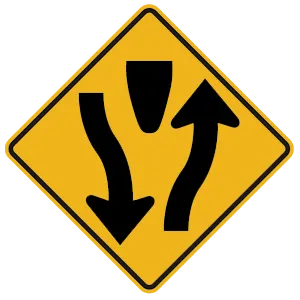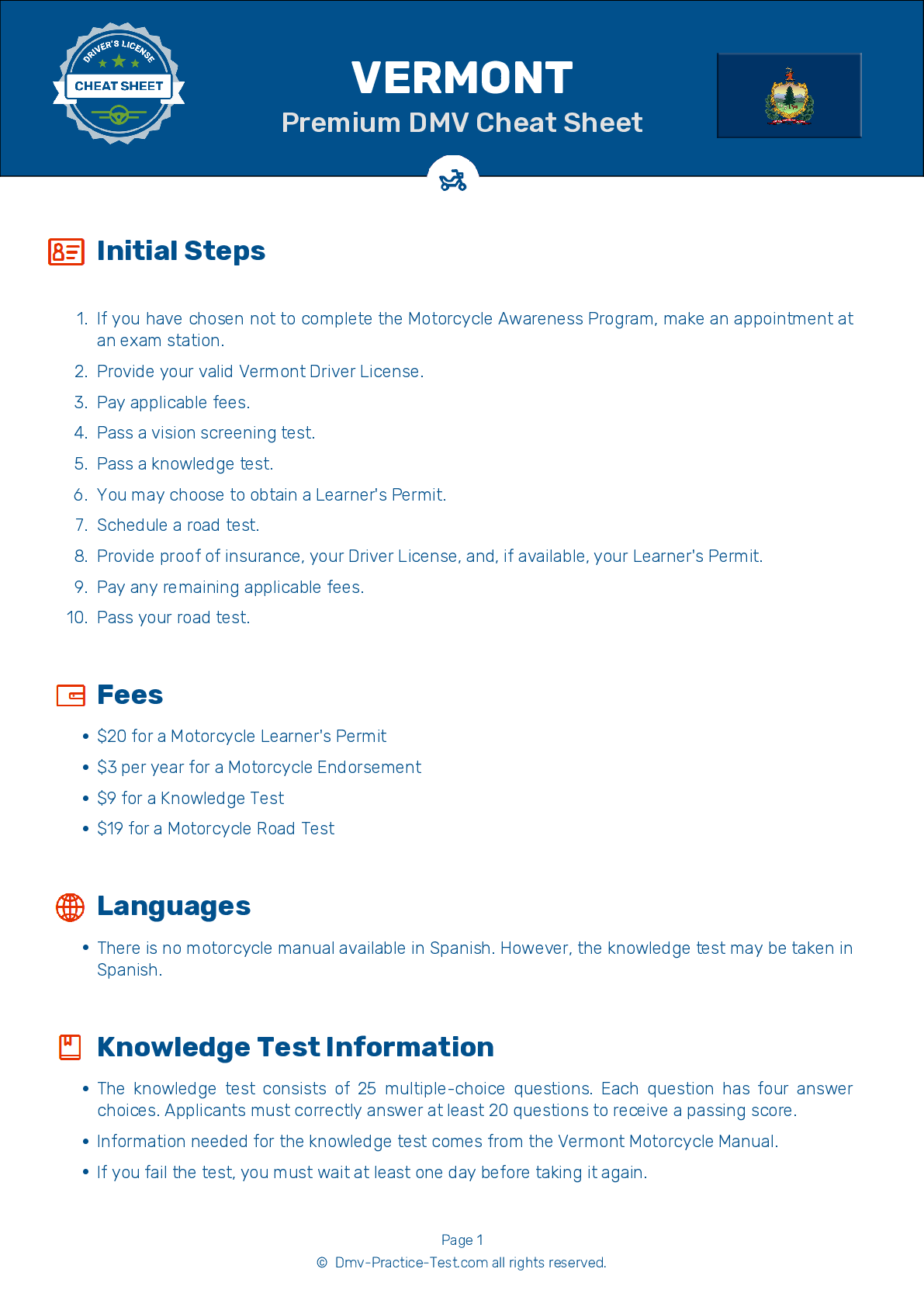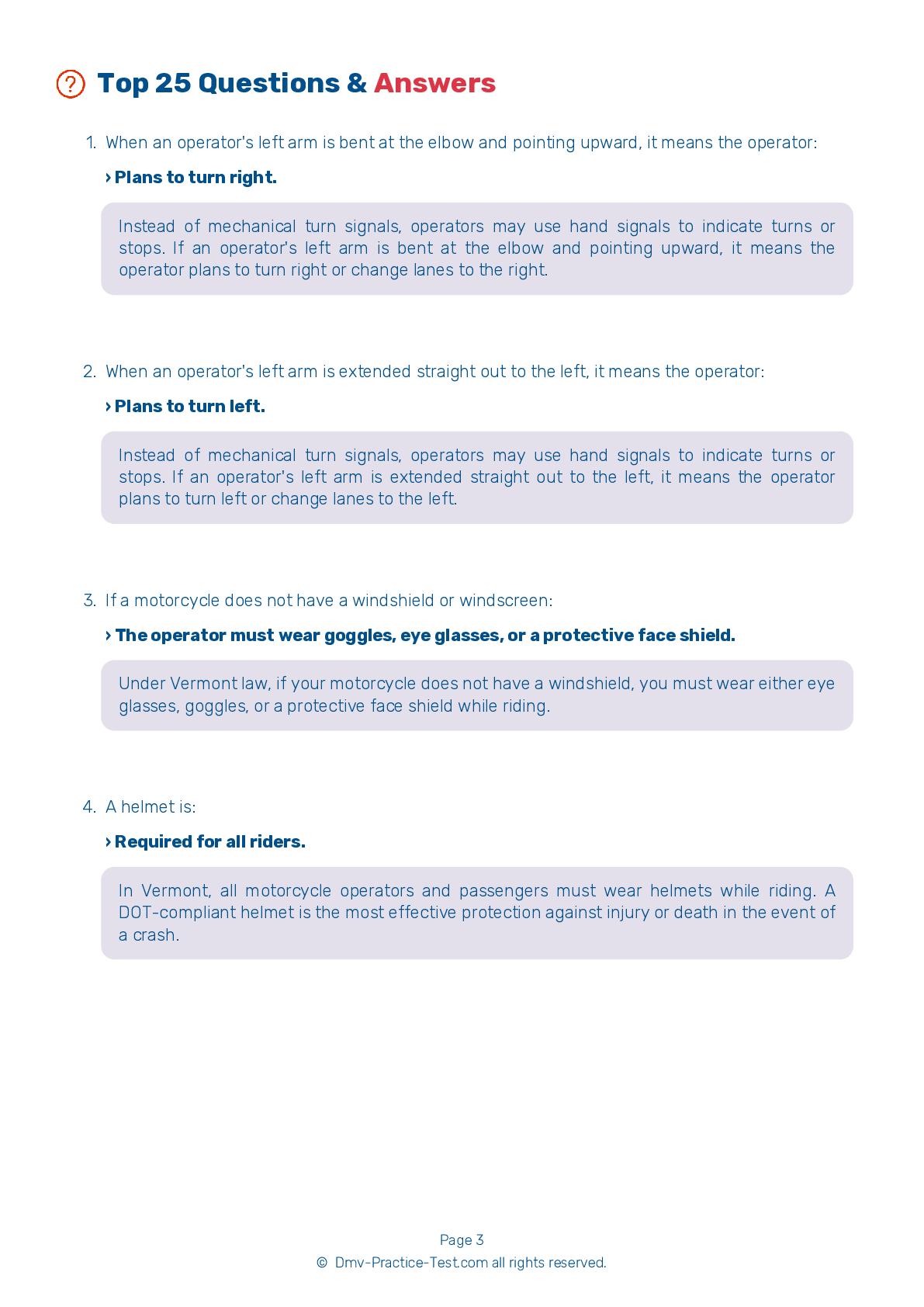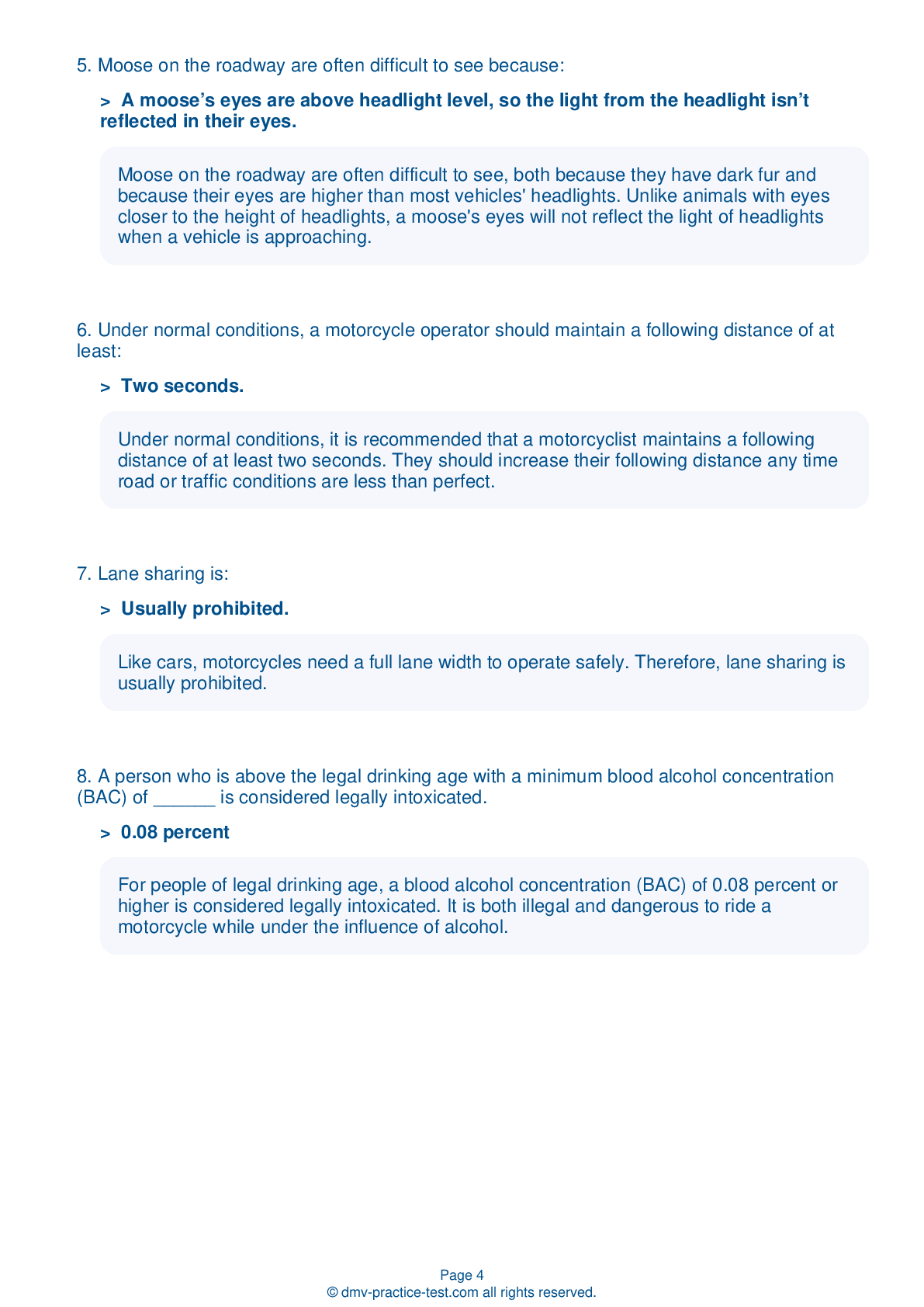Motorcycle Test | License VT 2025 | FREE Online Practice! #1 Page 2 of 4
Take this FREE motorcycle test (license in VT 2025) to check your knowledge of the road rules. To improve your results, download a motorcycle handbook online, study theory, and practice for free on our website. Still worried about how to get a motorcycle license in Vermont in 2025? Check our website for more sample tests, train as much as possible, and boost your grades!
7 . Reflective clothing should:
Wear reflective materials to increase your visibility, especially when riding at night. Brightly-colored clothing with reflective materials will make you more visible to other road users.
8 . When riding a three-wheeled motorcycle, a rider should:
When operating a three-wheeled motorcycle, it is possible to have only two wheels in contact with the ground. This condition occurs whenever enough weight is transferred outside of what are known as “tip-over lines.”
9 . Mirror checks should be done:
Frequent mirror checks should be part of your normal scanning routine. Additionally, make a special point of using your mirrors before changing lanes, when stopping at an intersection, and before slowing down.
10 . This sign means:

This sign indicates that the road ahead becomes a divided highway. Keep to the right of the divider or median.
11 . When a lead rider is extending their left arm and pointing downward, it means:
Hand signals are an important part of communication when riding in groups. When a lead rider is extending their left arm and pointing downward, it means there is a hazard in the roadway on their left side.
12 . When your mirrors are properly adjusted, you should see:
Adjust your mirrors so you can see the lane behind you and as much as possible of the lane next to you. When properly adjusted, a mirror may show the edge of your arm or shoulder, but it’s the road behind you and to the side of you that is most important.
See the exact questions that will be on the 2025 Vermont DMV exam.
99.2% of people who use the cheat sheet pass the FIRST TIME
Jeneen was tired of paying $5/gallon. She got herself a scooter that required the motorcycle license. She studyed the motorcycle test cheat sheet and passed her test the next day!
Christopher tells us how he knew nothing prior to obtaining the motorcycle study guide, and he only got one question wrong because he clicked on the wrong answer by mistake.



